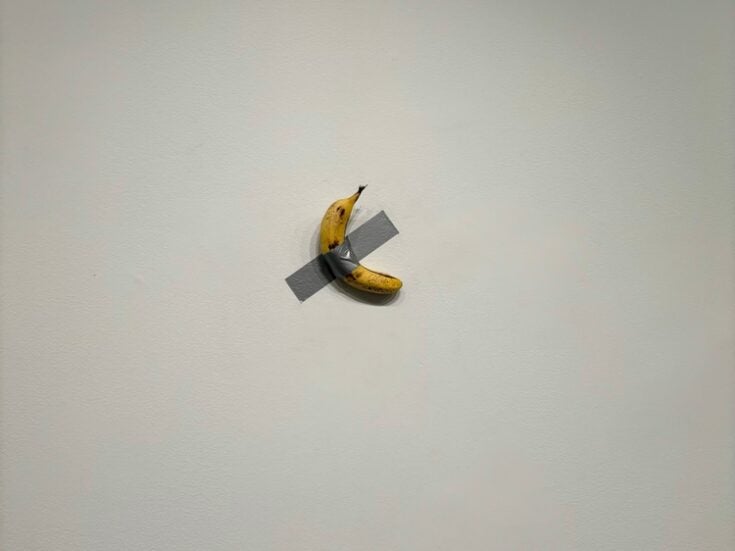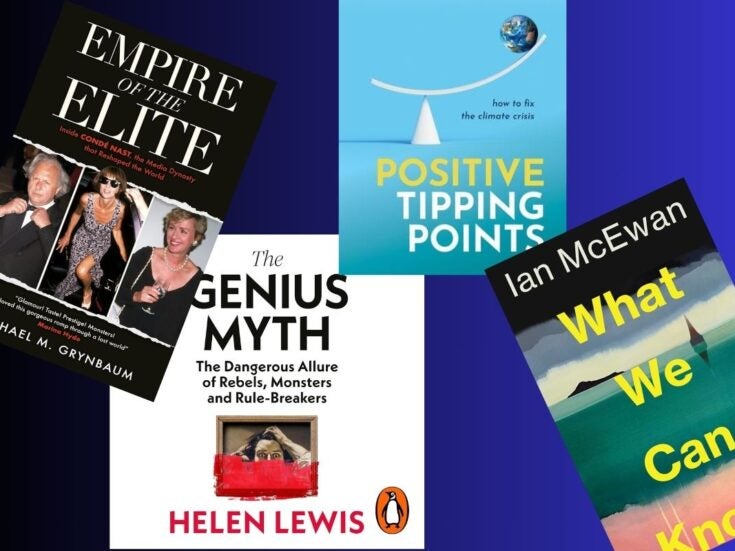
New York-based artist Richard Dupont makes transparent sculptures filled with household waste. But that doesn’t mean his work is rubbish, says Anthony Haden-Guest
SEVERAL GIGANTIC HEADS of Richard Dupont were looking out in different directions on the floor of his studio on Varick Street in Downtown Manhattan. They were transparent and filled with… stuff. ‘Everything that’s in them has passed through the organism,’ Dupont said, ‘whether it’s the studio or literally things that were used and consumed by the family. There’s failed art in there. There’s kids’ art in there. Everything in there has a residue. There’s a pair of shoes that I wore around the studio for eight years.
‘I started making them in November, largely in response to the fact that I had ten years of stuff and it was becoming a problem.’
Some people just chuck things away, I pointed out. Dupont laughed.
‘I know,’ he said.
Dupont’s solution, however, was to stuff the rubbish into giant, identical likenesses of himself, embedded in colourless resin. ‘They are completely solid,’ he said of the pieces. ‘They are frozen — the time is frozen in them. I used up a lot of stuff very quickly, and then I started using everyday trash. I was not throwing anything away; I was carrying things from home in bags every day, and when you do that you realise what you don’t realise normally, which is how much we are generating. It’s astonishing, the volume of garbage. Everything has some kind of packaging which is just meant to be stripped away and tossed immediately. You begin to understand how much fat we throw away.’
He gestured.
‘That one there with all the bottles — it’s two weeks of behaviour. It’s the very last one I made.’

Dupont, who is in his early forties, studied art at Princeton, which meant that he was constantly in Manhattan during the Eighties. ‘I could come in regularly and just wander around when all the galleries were over on West Broadway,’ he says. ‘I saw a lot of early shows that Mary Boone had. I saw Jeff Koons’s fantastic show at Sonnabend, Made in Heaven. It was La Cicciolina and Koons, juxtaposed with all those wood-carved polychromed poodles.’
This was during the white heat of that art star-infested epoch, so you could easily imagine that Dupont, an heir to the Du Ponts of Wilmington, Delaware, one of America’s oldest and most formidable industrial dynasties, would have found it a congenial time to be there. But you would be wrong.
‘I can see that some people want their artists to embody a certain amount of mythos and believe that the story adds to the drama and the mystique of the work,’ Dupont said carefully. ‘Which is just absurd.’
He rejected Warholesque glamour — he had a different working model. ‘I liked the approach of Bruce Naumann, or Richard Serra, or Eva Hesse, or Sol LeWitt,’ he said, talking of the process-oriented artists of the Seventies. ‘In that generation it was just about taking the ego out of it and just following a set of procedures. Chuck Close obviously is coming out of that. But then everybody got really bored with that and wanted to have the myth again. So all that stuff came back at the end of the Seventies and into the Eighties.’

Dupont graduated and moved to Manhattan in 1991. ‘For a long time I lived on Prince Street and Sullivan; I shared a place with my brother on the ground floor. And I had a studio on Canal Street.’ The art economy had gone phffft! in 1990, but the art world was as buzzy as a kicked ant hill. ‘I went to every opening, every show,’ Dupont said. ‘I read every single thing I could possibly read. I was consuming and digesting and burning through, and trying to understand the whole thing. And then new galleries were opening — David Zwirner had opened, and I started seeing Jason Rhoades, and Paul McCarthy emerged finally at the ripe old age of God knows how old. Things were changing.’
Dupont had been working on photo-collages and photo-based paintings and then moved into digital media — but it wasn’t until he made himself the subject of a body scan that he felt he was moving into territory he could make his own.
‘It wasn’t a full body scan,’ he recalled. ‘I just scanned my head. I was working with a video-game company out on Long Island.’ Others have explored this territory, including Cao Fei, the Beijing-based artist who showed a virtual utopian city built within the internet game/system Second Life at the Serpentine a while back. But Dupont was ahead of the curve.


‘Way before Second Life, way before anybody was talking about avatars or any of that stuff, I was creating this kind of virtual character, because I was interested in body art and performance art. But I didn’t think that I could just use my own body in the sense of the Seventies performance artists that I admired. So I wanted to find a new way to do it — I just wanted to create a virtual character, a virtual protagonist to be the raw material, and put it through paces. A virtual version of me.’
Assisted Head (2010) and above Transformation Head from Richard Dupont’s collection of polyurethane heads filled with assorted waste.
THE BODY OF work that sprang out of this trouvaille was put on public display in Terminal Stage (pictured left), a show installed in 2008 in the huge street-level art space created by the developer Aby Rosen beneath one of Manhattan’s most Modernist-history-encrusted skyscrapers, Gordon Bunshaft’s Lever House. And public it was. Nine figures of the artist, each naked, pinkish and standing 80 inches tall, had been disposed within the huge, glassed-in space — which does not begin to convey the effect.
The pinkness, for instance, is matte rather than painterly, so it doesn’t suggest flesh so much as an almost abstract ‘thereness’, a feeling hammered home by the absence of detail — no eyelashes, no frown lines — so the effect is nude rather than naked, no intimacy being implied. Intimacy indeed is repelled. The figures have been created by a full-body laser scan and moulded out of polyurethane, a substance as creepily seductive as it sounds. In each case the body has been formed or deformed according to a different twiddle, prod or flip of whatever one flips, prods or twiddles in making a laser scan, unless of course it’s purely a matter of writing code.
Circuiting the floorspace at Lever House was to encounter nine unsettling variants of Richard Dupont, from a human knife-edge to a squat, Postmodernist Neanderthal, but each of which — like the anamorphic skull in Holbein’s The Ambassadors — seen from just the right vantage point reassembles itself into the actual fully dressed artist, Richard Dupont.
So although Dupont uses his own body and makes his rubbish-filled heads, he is the raw material of his work, rather than the hero.
‘The whole point of almost everything I have done is the idea of the loss of identity,’ he said. ‘That’s the undercurrent. I think in a digital state, identity has become completely malleable. These days we can be whoever we want. We are constantly communicating through these false platforms, posting pictures of this or that version of ourselves on the internet. It’s completely fluid. Or when it’s more about other people watching us — surveillance, or mapping the body, tracking the body. The fact that any of us can be pinpointed any given time, anywhere.
‘So what I do is sort of keeping track of yourself, you know, which is the other side of the same coin. And I think that art is flexible enough to convey that. Technology is very cool, as long as it doesn’t become just a total crutch.’







